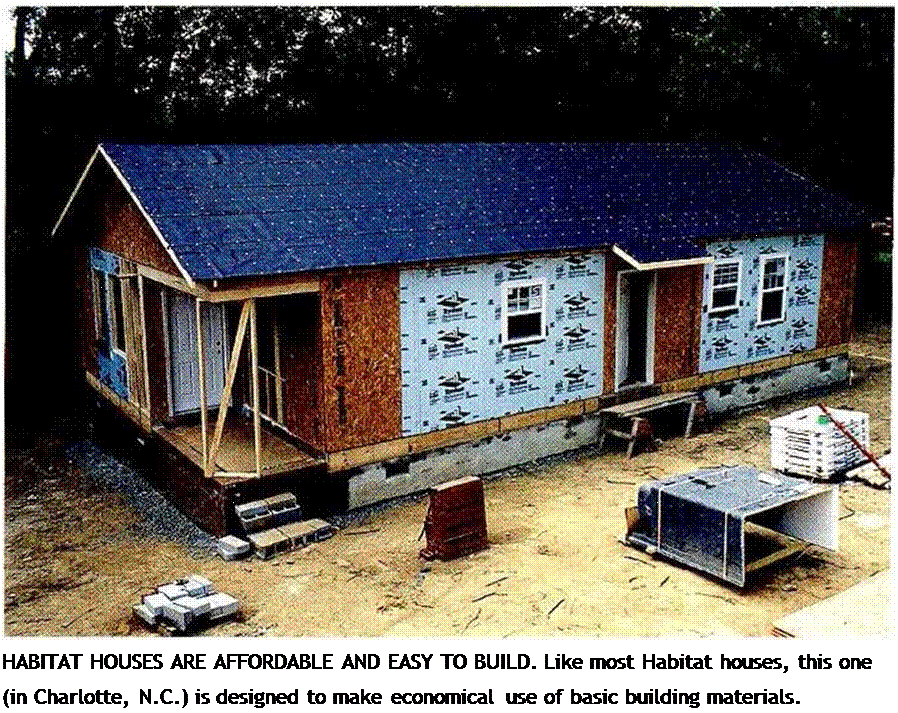Provide a fence for safety and security
Installing a fence around your site is a good idea. It can deter or prevent the theft of tools and building materials. It also makes the site safer by discouraging unauthorized visits.
 |
 |
Liability insurance is also a good idea, and it may even be required if you’re borrowing money from a bank. Always work to keep your site safe, organized, and free of debris, especially boards with nails protruding from them. Stack unused materials neatly, keep trenches covered, and limit access to anv unsafe areas. One nail in a worker’s foot or a bad ankle sprain from tripping into a trench can cost a lot of time in medical attention and recovery.
The bumper-sticker slogan, “Live Simply That Others May Simply Live,” speaks to the design aspects of an affordable house. To increase the cost of a house, all you need to do is complicate its design. Affordable housing is, by nature, small and simple. The same formula that makes for a safe house in earthquake country—small, low, and light—makes for an affordable house anywhere in the country.
The Charlotte house featured throughout this hook is one of the most cost-efficient designs you can build (see the photo at right). This single-story structure has a simple gable roof that extends over a small porch, where the main entry is located.
On a small lot, where setbacks seriously limit the footprint of the house, you may need to consider a small, two-story design. Habitat for Humanity has a good selection of basic house plans that fit the needs of most families (see Resources on p. 278). Admittedly, the bedrooms are not discotheque size, but you can do your dancing in the living and dining room. In a house, quantity of space doesn’t necessarily translate into quality of life. When my children were young, I enclosed our front porch and made two 5- ft. by 9-ft. rooms. They were cozy, sun-filled spaces; one was used for study, one for music. To my surprise, those two tiny rooms became the most popular parts of the house. A well-sited, well-designed house elicits that kind of reaction (see the sidebar on p. 10).
Another way to conserve space and save
money is to choose a floor plan that reduces
or eliminates hallways. As you look over a
house design, remember that doorways need
to be at least 32 in. wide—36 in. for easv
/
wheelchair accessibility. And keep in mind
that the direction in which a door swings can affect how well a room works and where you can place the furniture.
Other cost-saving strategies have more to do with materials and energy use. Keep the kitchen and the bath on the same side of the house to minimize rough plumbing expenses. In cold regions of the country, run plumbing lines in interior walls and enclose the porch as a mud room to minimize heat loss when coming and going. To find out which house designs work well in your area, seek advice from local builders, building inspectors, designers, or architects. You’ll find it’s not too difficult to modify basic plans to suit your needs and meet building-code requirements in your region (see Resources on p. 278).
Check with your building department to see whether your house is required to have a garage. Habitat for Humanity’s policy is to “build for people, not cars,” but some municipalities require garages. Sometimes, however, you can get a variance sc vou don’t have to
4 <P 4

 build a garage.
build a garage.
Improve your design skills. Check with your local community college if you’re interested in learning how to read house plans or design a house. Most community colleges offer courses in computer-aided design, drafting, and construction management.







Leave a reply